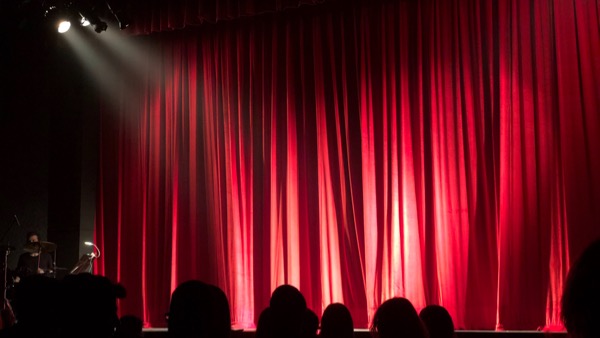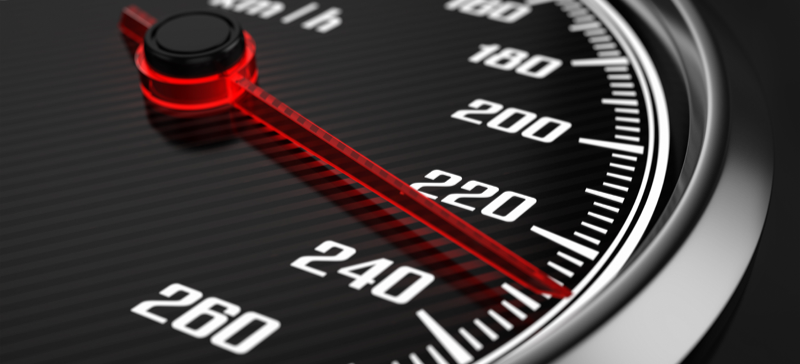Are you a storyteller on stage? Do you want to engage and inspire your audience comfortably and naturally? The great news is that you have one of the essential tools to accomplish this already! Let's explore how you can adjust your voice to tell your stories in a more impactful way.
Pace
Have you ever been told you talk too fast or too slow during a presentation?

Let's dissect that for a moment. What pace is too fast vs. too slow? Why is either a problem? Is it because the person is trying to keep up and your quick pace is hard to process? Is slower better, or is it not enough to keep their interest? How do you solve this problem (is it even a problem)? You might have to be a wizard and figure out the exact pace that makes everyone happy. But you know, my father always tells me that if I try to make everyone happy I'll be very disappointed. The same thing here is true.
So let's step back a bit and talk about the right pace. My feeling is that there is no single right pace. Often I find that a presentation where the velocity varies is much more interesting than one where the same rhythm and cadence exists.
Patterns
Our brains are attuned for detecting patterns. When we find them, things start to blend in. Remember that catchy song you were recently listening to while working? I bet you remember the pattern and can work while it's playing. You can focus on other things because you have trained yourself to expect the pattern that is playing. We can tune out on patterns and put them in the back of our minds.

Change the Patterns
Now imagine you are attending or watching a presentation. You will detect patterns in the presentation, perhaps in the back of your mind. But they are there. Your mind is trained to recognize them and expect them. If the pace is constant throughout the presentation, that is indeed a pattern.
If the presenter varies his/her pace at critical moments, it recaptures your attention.
Patterns are another tool we can use. Both maintaining patterns and breaking patterns are good tools. I'll share more on this in a future article, outside of this series on "voice".
Ludicrous Speed
Sometimes we may speak quickly and pretty much non-stop without pausing. Sometimes people are just fast-talkers. This is OK - in fact talking fast can be very effective at times. The key part being "at times". When we talk fast we can generate excitement. Maybe you're so excited about this topic that this section of the presentation makes you giddy! I know there are times I want to jump up and down because I'm excited about what I am sharing. This is OK. No, it's better than OK. If you can help make your audience feel what you feel, you've connected with them.

You should use a fast pace at key moments in your presentation to generate a feeling in your audience. Do this when it feels right.
I recommend thinking about what your normal pace is, and then find a comfortable faster and slower pace that you can use when you want to shake things up. Use these changes of pace purposefully to grab the audience, connect with them, and help them share the feeling you have right then and there.
One caveat to remember is that a fast pace does not mean you have to lose clarity. Be sure your voice is still clear and understandable. Especially if you are speaking to audiences that may not be native speaking to the language you are talking.
Pausing at Key Moments
We're often told that slowing down too much can be bad in a presentation. That dead silence is a bad thing. Well, it can be, but it can also be an incredibly effective way to grab attention and make an essential point.
Have you ever listened to a presentation, a news report, or just a conversation with your friends where there was suddenly a pause in the action? What did you do? This pause can grab your attention cleverly and subtly.
When you place a pause at a strategic moment in a presentation, they can positively impact its effectiveness. Here are some use cases for using a pause to improve a presentation:
- when you want the listener to have time to absorb an important point and think about it
- when you ask a question you want them to consider and answer in their heads.
- when you want to give the audience a chance to predict what you will say/do next
- when you want to change the direction of a presentation
- when you need to collect your thoughts or breathing
You know those "ums" and "so's" that pop up a lot? They are filler words, and sometimes we use those to fill in gaps between our thoughts. Ask yourself this: Do you follow a presentation when the speaker is talking fast and non-stop? Maybe. But what if those filler moments were actual pauses? This might give the audience time to think about what you are saying. You can also vary the length of your breaks, depending on the reaction you want from your audience.
A short pause is good for the audience to catch up and process what you say. A longer break gives them time to think through it, answer a question, and wonder where you are going next. Remember, you control the narrative.
This doesn't mean you should pause every other word. You likely won't be effective talking consistently like dramatic Captain Kirk on Star Trek for a 30-minute presentation. But if you find the key strategic moments in your presentation where you need to grab their attention. A pause might do the trick.
Parting Tips on Pace
Here are quick tips for using the pace of your voice.
- Vary your pace. People learn to live and look for patterns and rhythms.
- Use a fast pace at a key moment to generate excitement.
- Use pauses. If you like a number, choose two key moments in your next presentation.
- If you think you may speak too slowly, vary your rate to speak quickly at times.
- If you think you may talk too quickly, change your rate to speak slower at times.
Finally, observe the audience when you vary your pace. What reactions do they have? Experiment with this and as it will help you adjust your speed and improve your engagement with your audience.
A bonus tip is to use your body language during a pause to gather the audience. Ask a question or make a profound point, then smile and node your head with them.
What's in This Series?
Here are the other topics in this series, in no particular order. I'll update these links as I publish them.
0 -Using Your Voice
1 - Pace of your voice
2 - Pitch of your voice
3 - Volume of your voice
4 - Emphasis of words in your speech
5 - Clarity of your speech
Good luck with your next presentation!
cross posted to dev.to here





